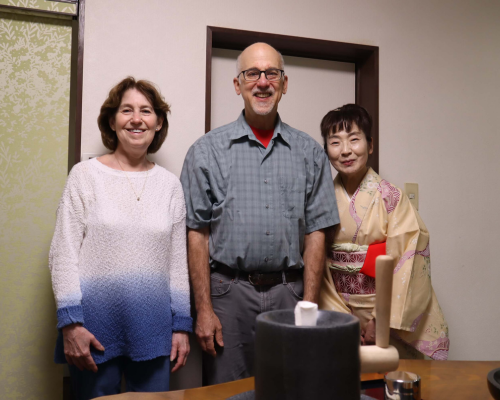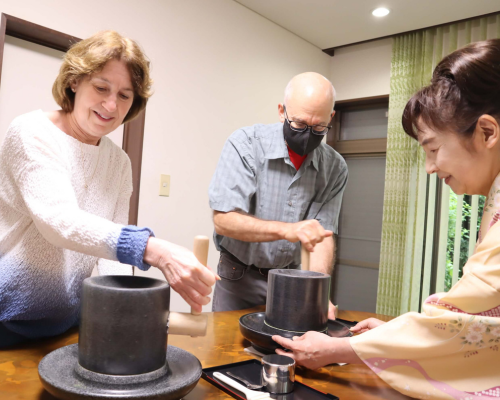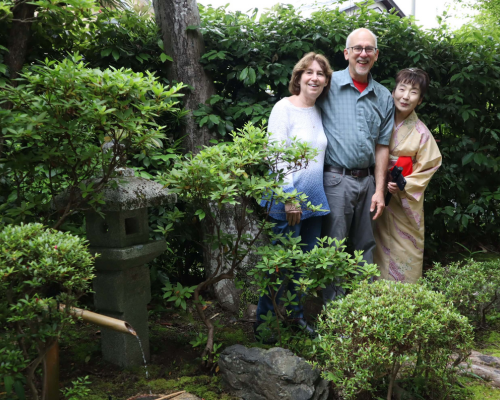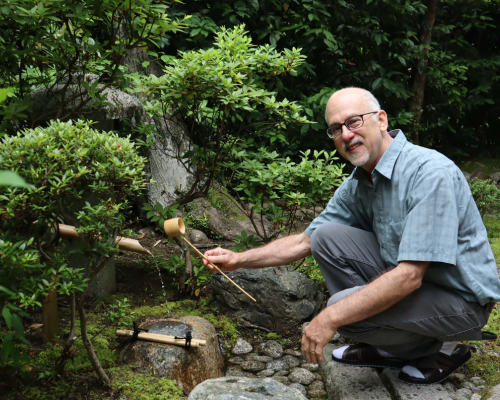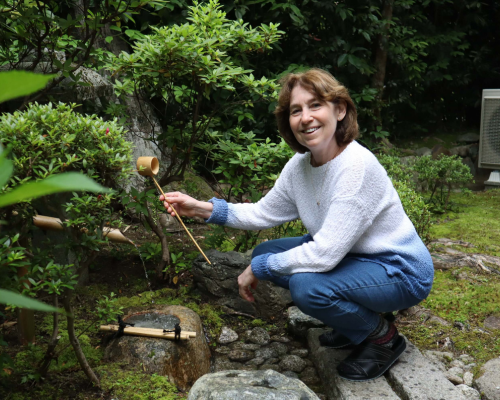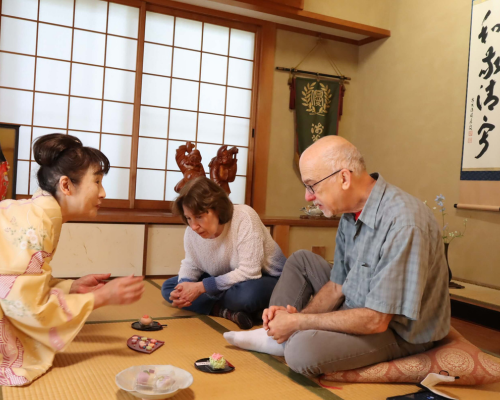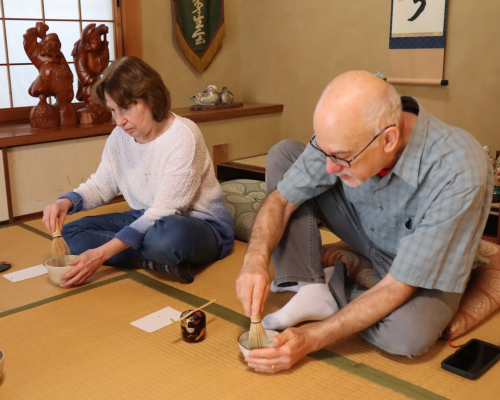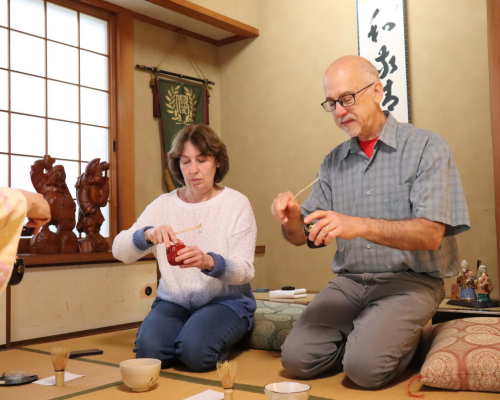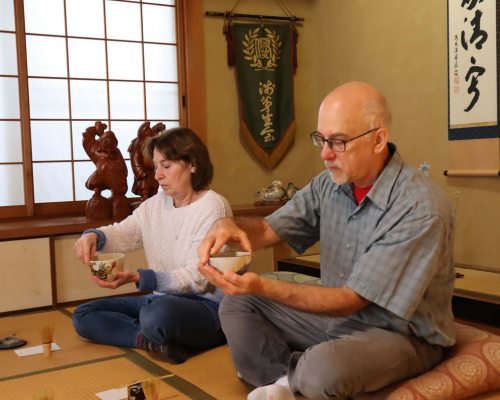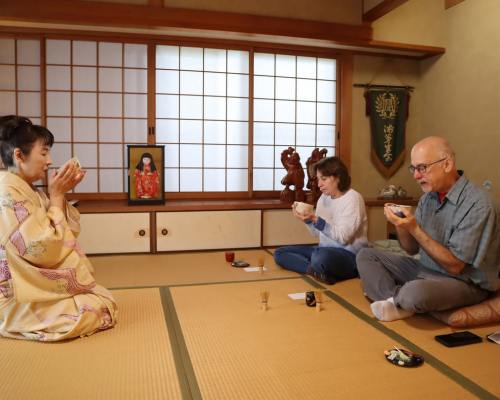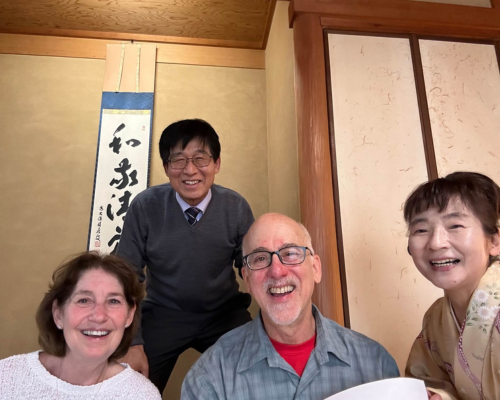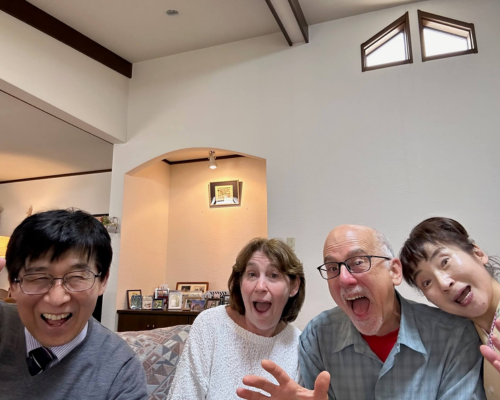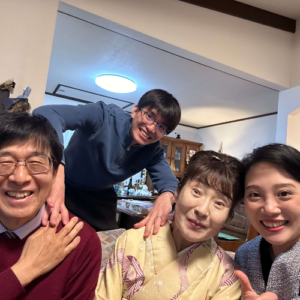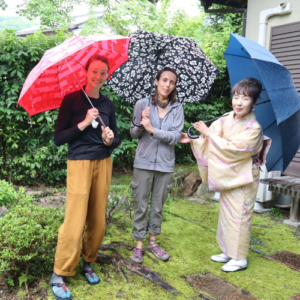A Cross-Cultural Connection in Arashiyama: Sharing Tea and Tradition
“There are so many beautiful places in Japan!” Wendy said with a smile as we met at Hankyu Arashiyama Station. Her husband Jon nodded in agreement. I was so happy. They had chosen to visit small Japan out of the whole wide world, and even decided to participate in a tea ceremony workshop in Kyoto’s Arasayama. Was this a miracle? A coincidence? We would spend the next two hours together with a complete stranger whom we had never met before. Naoko and I did our best to make them feel welcome and to deepen their understanding of Japanese culture.
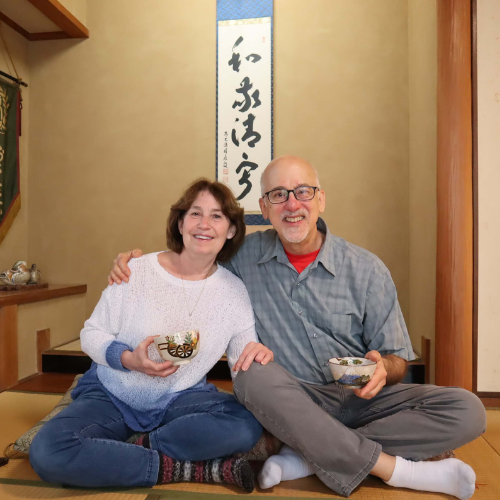
Wendy and Jon appeared to be captivated by the tea ceremony, eagerly firing off a barrage of questions. They inquired about the distinctions between matcha, sencha, black tea, and oolong tea, the origins of the tea leaves, the types of “washi” paper used for the shoji screens, the different schools of tea, and a myriad of other topics. Unfortunately, I couldn’t answer about a third of their questions to their satisfaction. I realized that I needed to study more, and I felt a little down about it.
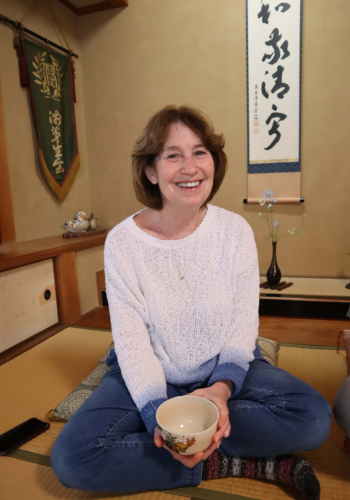
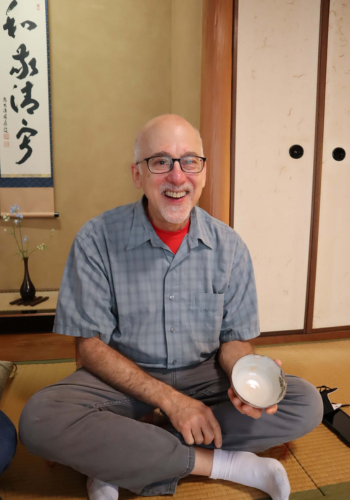
Both Wendy and Jon are big Japan enthusiasts. Wendy mentioned her plan to read The Tale of Genji, penned by Murasaki Shikibu during the Heian period.
Jon, too, seems to have a deeper understanding of the world of “wabi-sabi” than us native Japanese people.
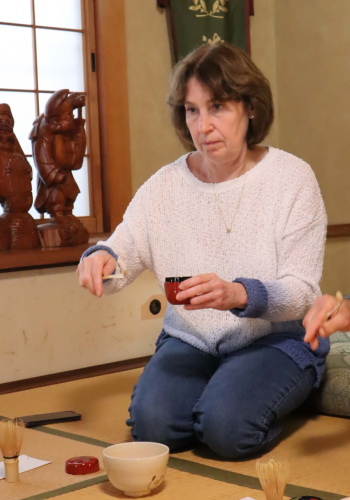
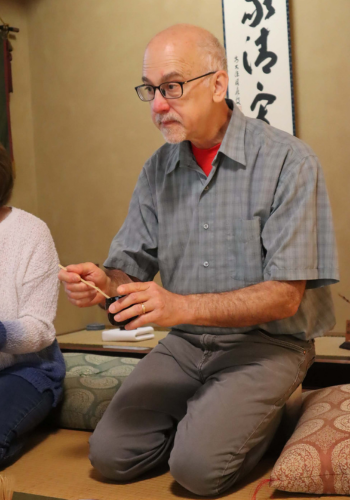
Jon and Wendy live in Washington D.C. It goes without saying that Washington D.C. is the capital of the United States and a political hub. I remember visiting the Lincoln Memorial, the Jefferson Memorial, the Washington Monument, and other landmarks with Naoko when I was young. I was awestruck to see the real thing in front of me, the same images I had seen in my middle school Japanese English textbook. Jon told me that cherry trees were sent from Japan as a token of friendship and bloom beautifully in the spring along the Potomac River. Listening to that, I wished that the friendship between Japan and the United States would last forever.
